Each January, as the new year begins, we like to take a moment to consider; think about the past, take stock of where we are right now, and contemplate the future. Last year, we looked at our past, present, and future, considering how our design and manufacturing spaces have evolved, how our logo has changed, and how the tools and teams that create our products have expanded and propelled our capability. This year we thought it would be fun to look at some of our products over time. What did the first designs, drawings, or prototypes look like, how do these products look today, and where are we going with them in 2023 and beyond?
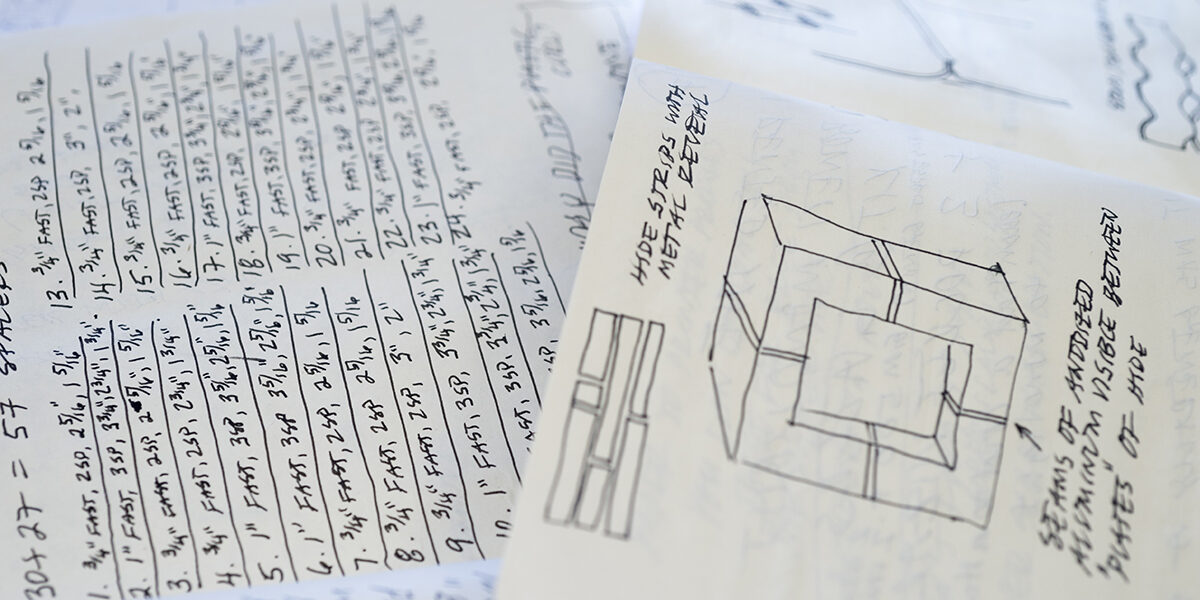
Duet Acoustic Wall Panels
Let’s start with a look into the inception and current design of Duet, one of the acoustic panels in our collection with Filzfelt. Our founder, David Hamlin, has always been inspired by nature, the geology, the flora, and the environment of the places he has lived and visited.
“I find that being out in the world and being presented with an everchanging visual landscape, whether in a natural environment or an urban landscape, is clarifying and stimulating. It becomes a meditation, like you suppress your own interpretation of things and simply watch and listen. You become a sort of sponge. And I find that without being aware of it, during that walking I absorb so much info that is later expressed creatively.”
Duet is an abstract exploration of beads of dew as they cling to grass in the morning mist. The wall panel is expressed with felt placed on edge in vertical lines that randomly diverge into soft bulb shapes before joining back together and continuing on. The original drawing at left illustrates the playful linework that is a tenet of our designs. The photograph at right displays how Duet is currently fabricated. Fun fact: Duet is a play on words—Dew-et— AND a description of the colorway, which is most often created with two felt colors.
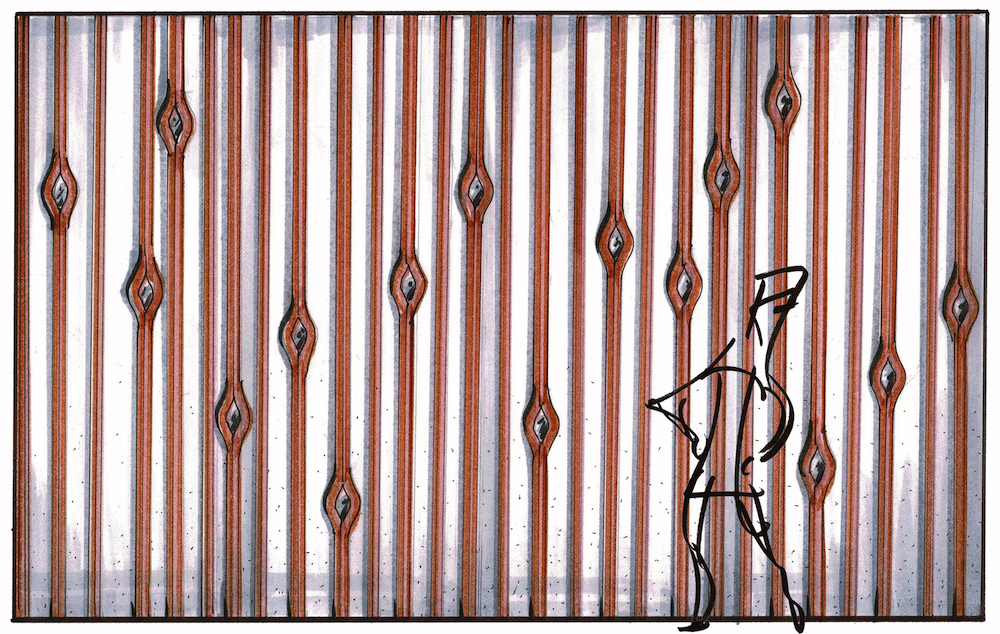
Early Drawing
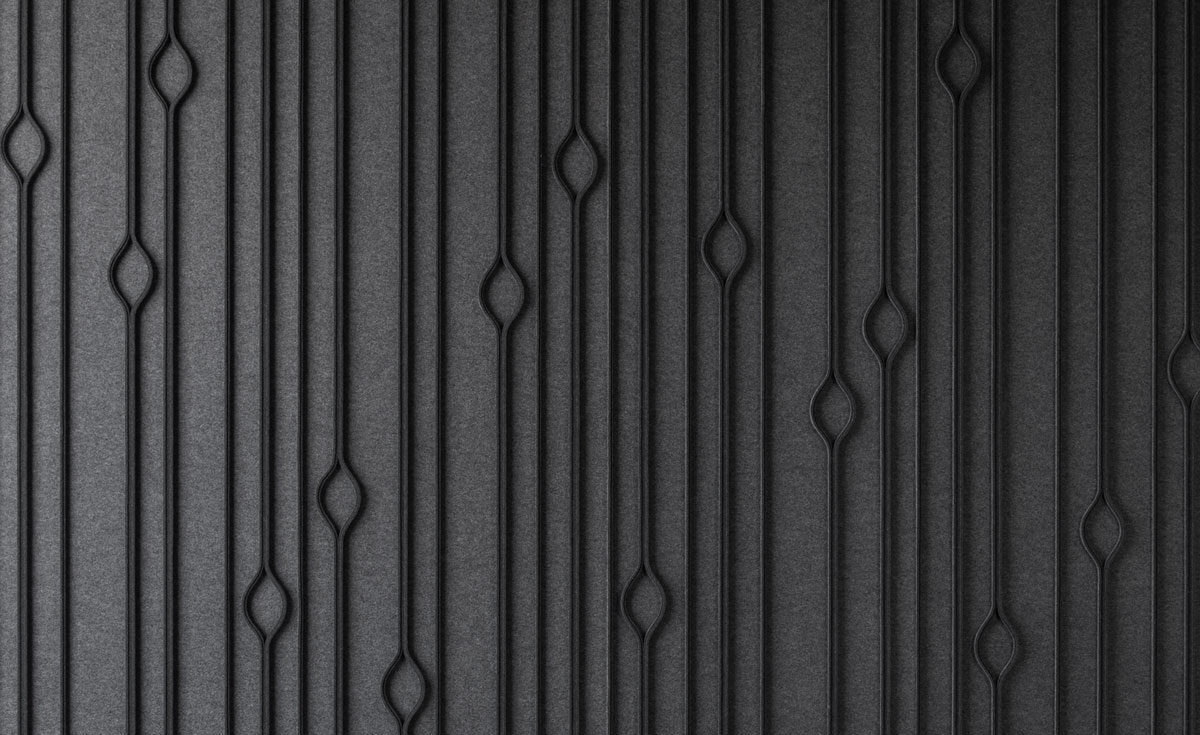
Duet installed
Currently, our acoustic collection with Filzfelt features six designs, including Duet. These panels as especially popular because they dampen sound (with an NRC rating of .60) while also providing beautifully designed surfaces. We are excited to introduce a suite of new acoustic panel designs in 2023!
Wander Mirrors
Next, let’s look into the multifaceted history of our Wander Mirror Collection. These sleek mirrors’ actual beginnings start with one of our wall coverings.
Our commercial wall covering, Ribsy, part of our collection with Filzfelt, was first introduced in 2018. The acoustic tiles have a deep ribbed texture created with thick wool felt strips oriented on edge in alternating heights. Three years after its introduction, Ribsy became our most popular wall covering. In 2022, our fabrication team produced nearly 70,000 square feet of this product. Even before its commercial success, the design team at Submaterial knew they had created something special.
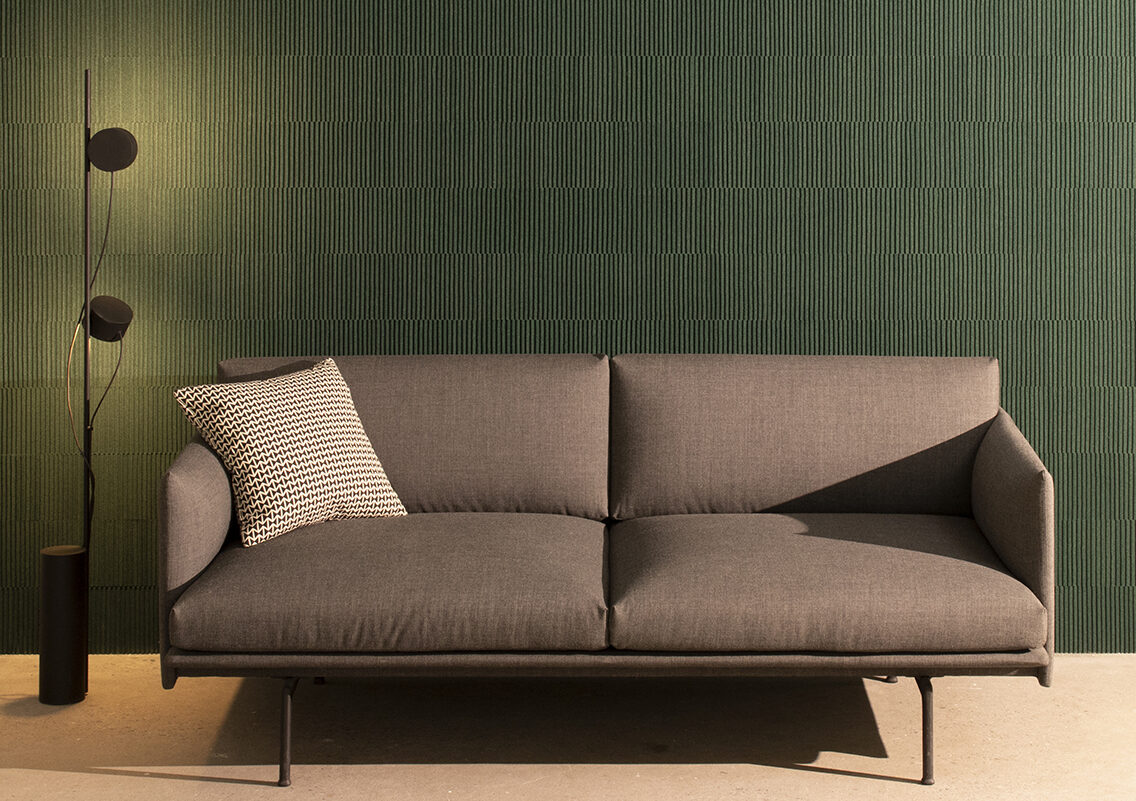
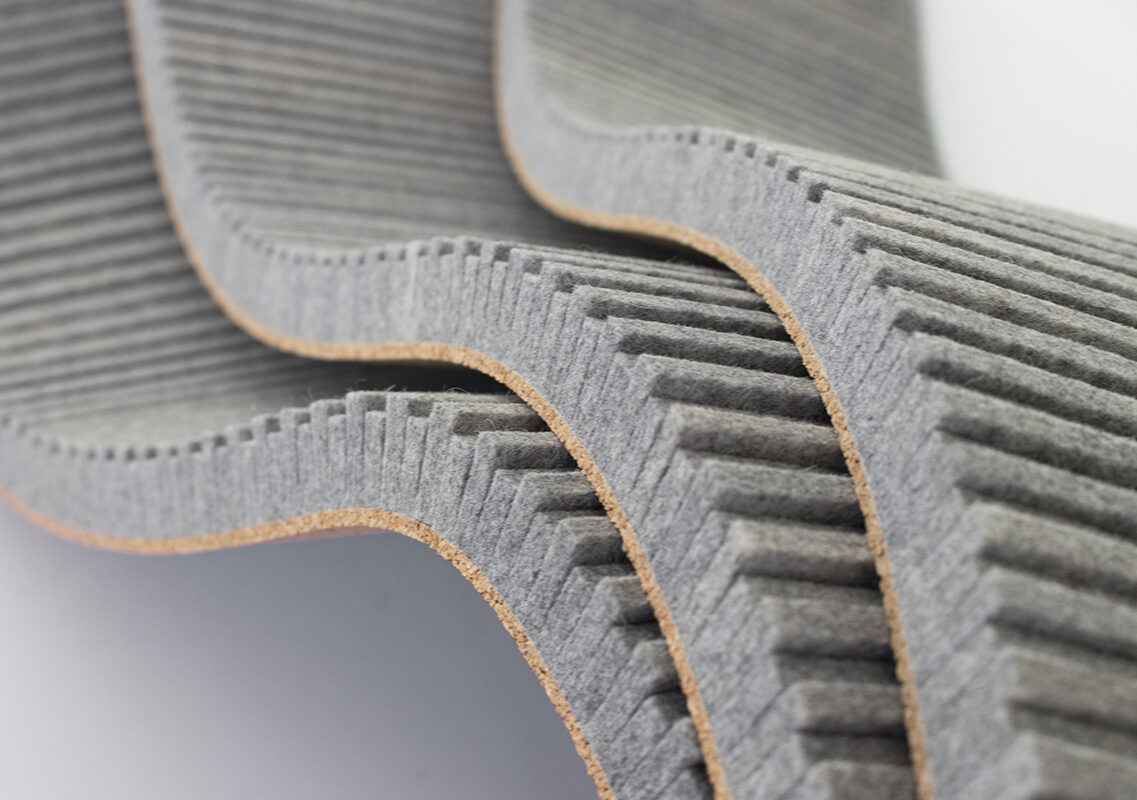
Inspired by the modern lines and alternating heights of Ribsy, our talented fabricators began experimenting with that same process but in wildly different layouts. Instead of the straight lines of the wall covering tiles, they twisted and manipulated the felt into curves, arches, and squiggles. The idea was for a modular art system where people could purchase various shapes in the same or different colors and create a custom wall design. Here is the thing, wool felt is a natural material, and it always has variations in color and thickness. Despite our best efforts, the modular shapes never lined up to our satisfaction. But in working through this prototyping process, we discovered a different use for these curved Ribsy sections.
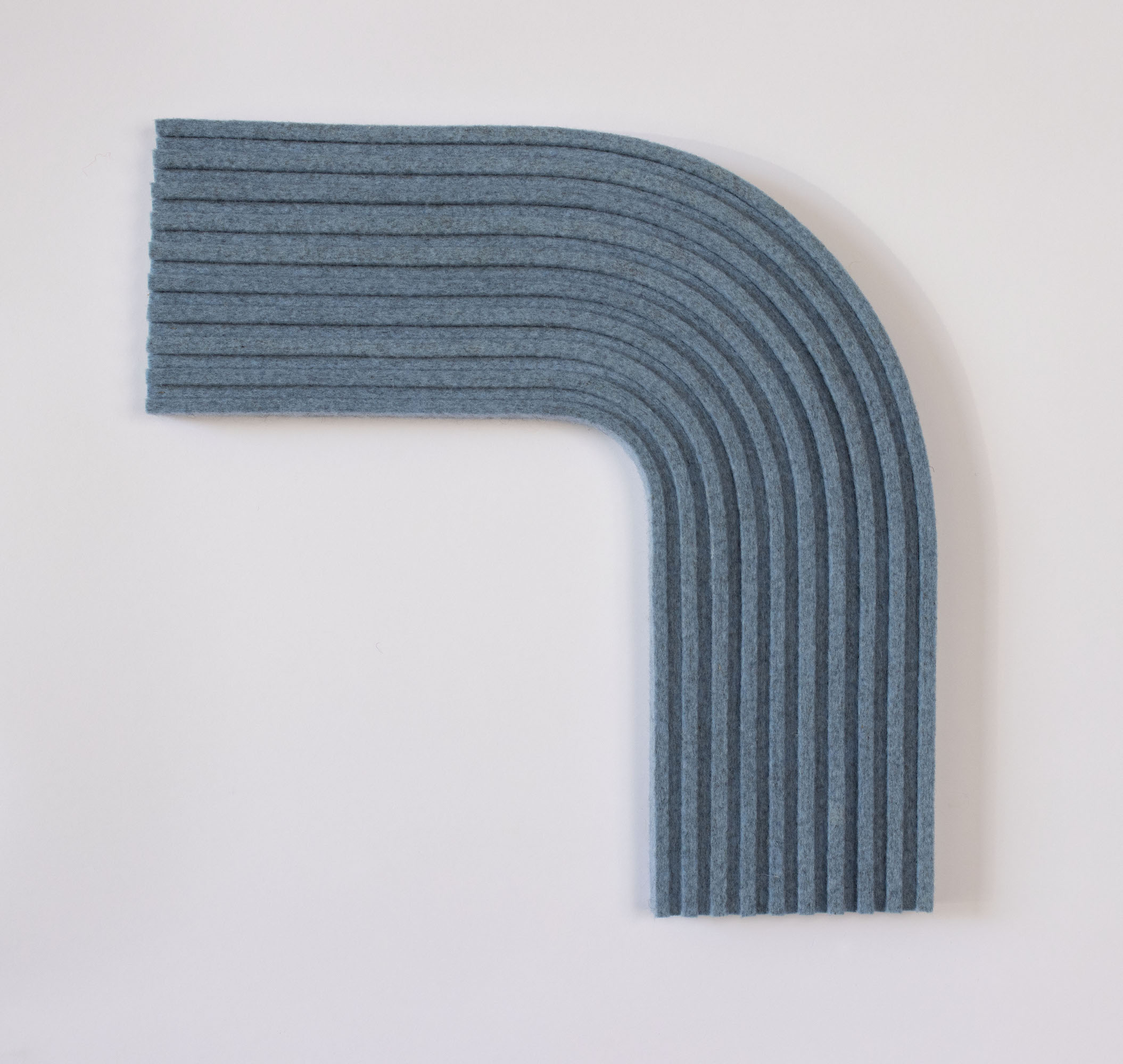
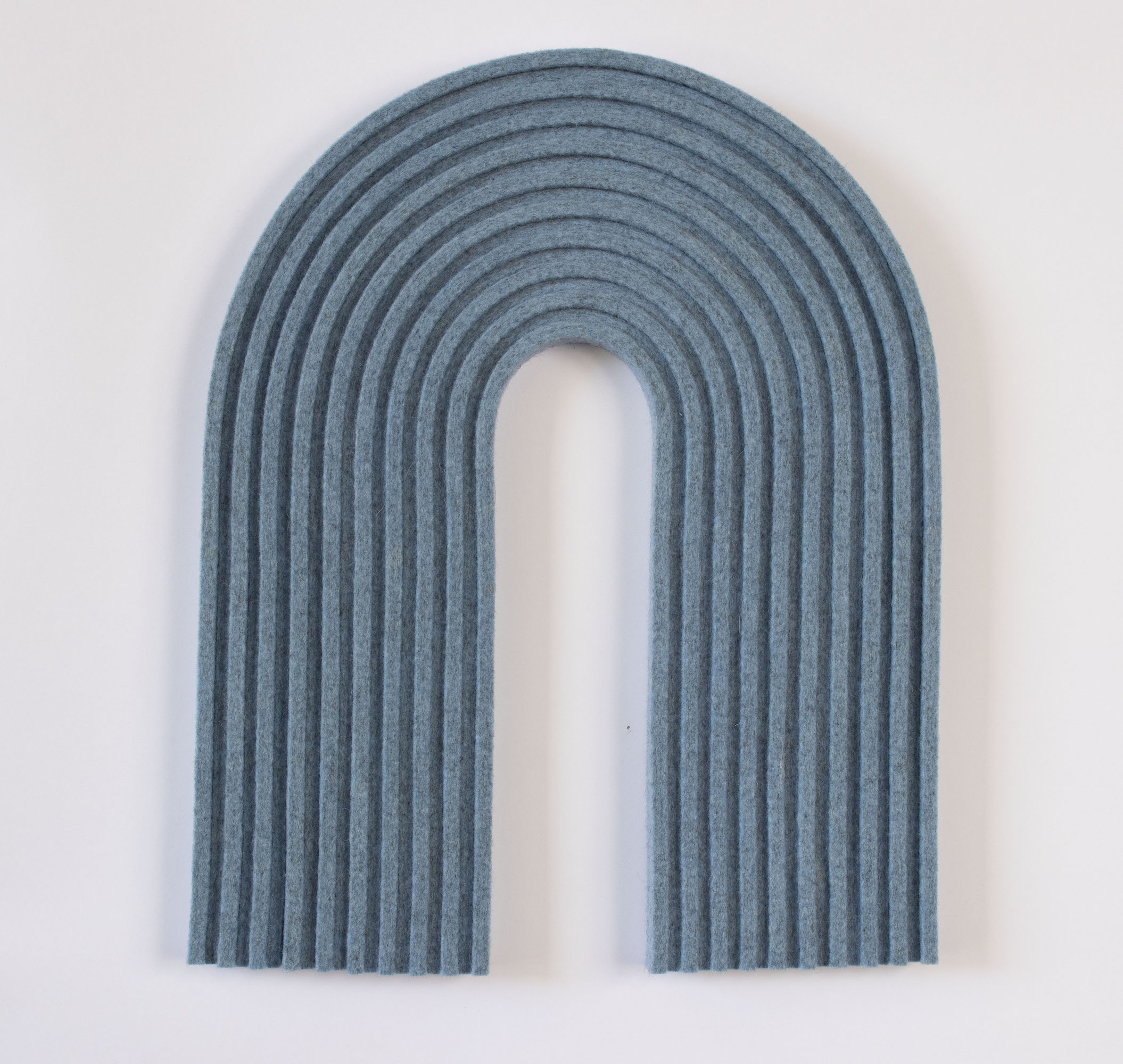
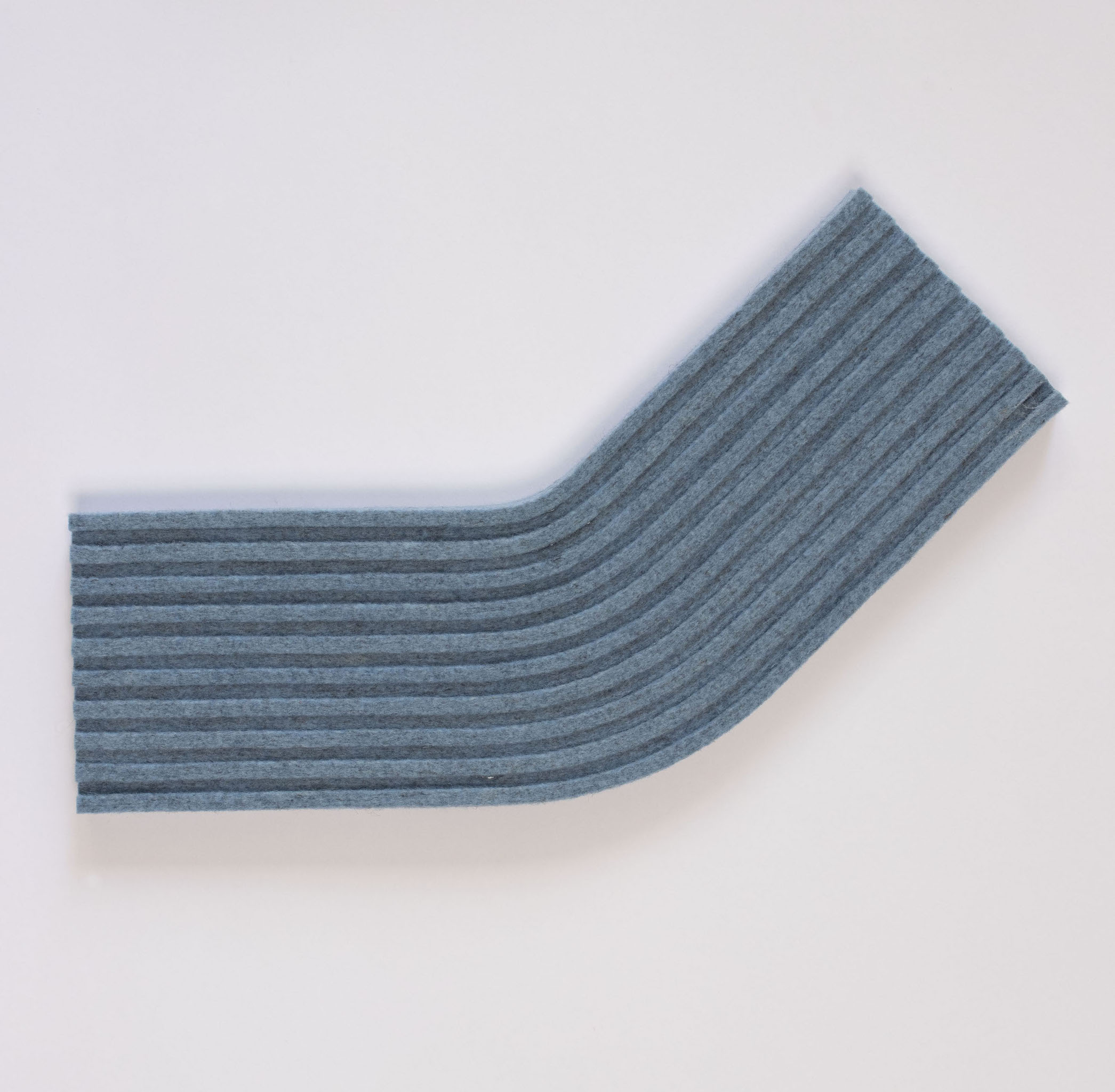
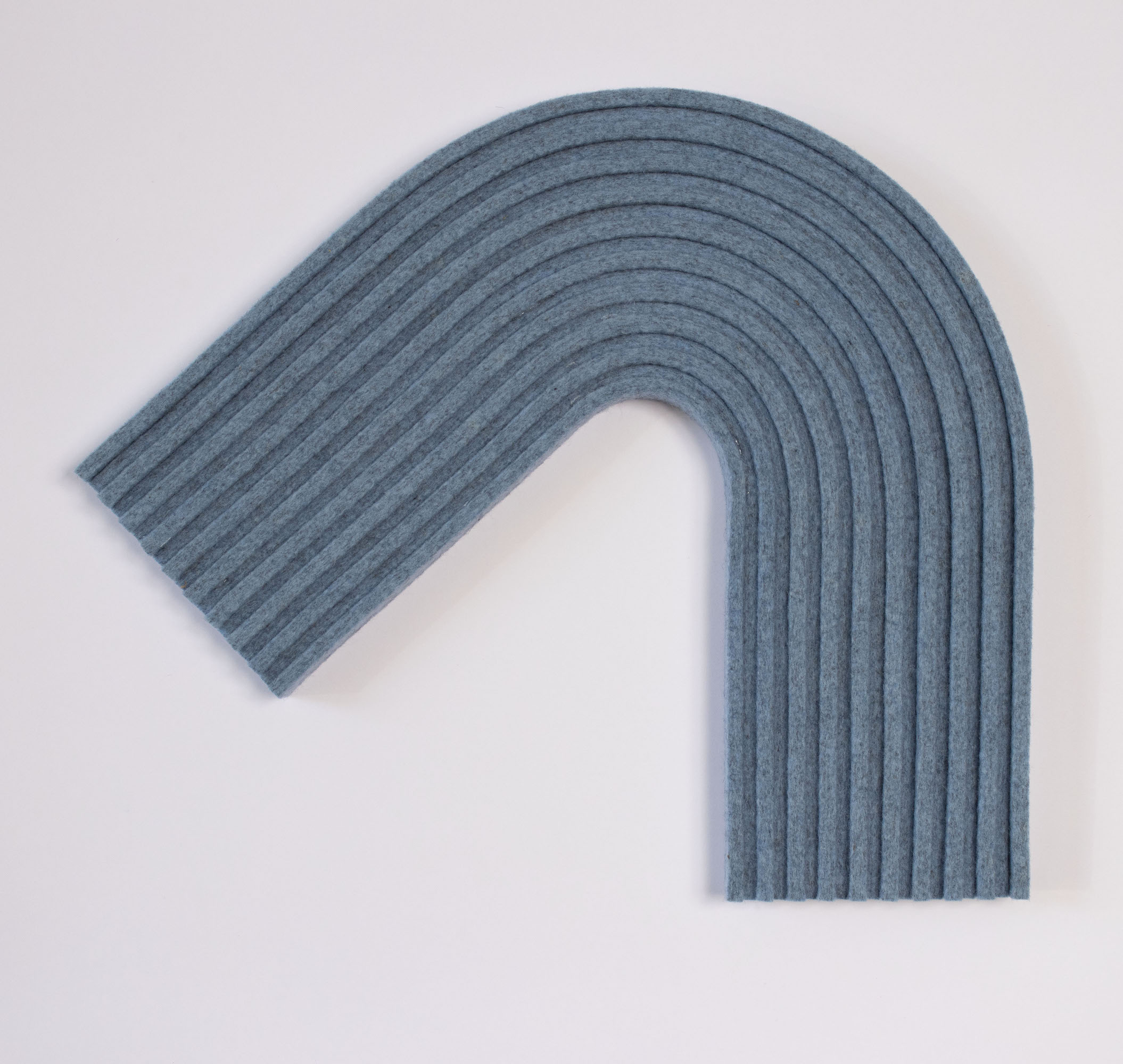
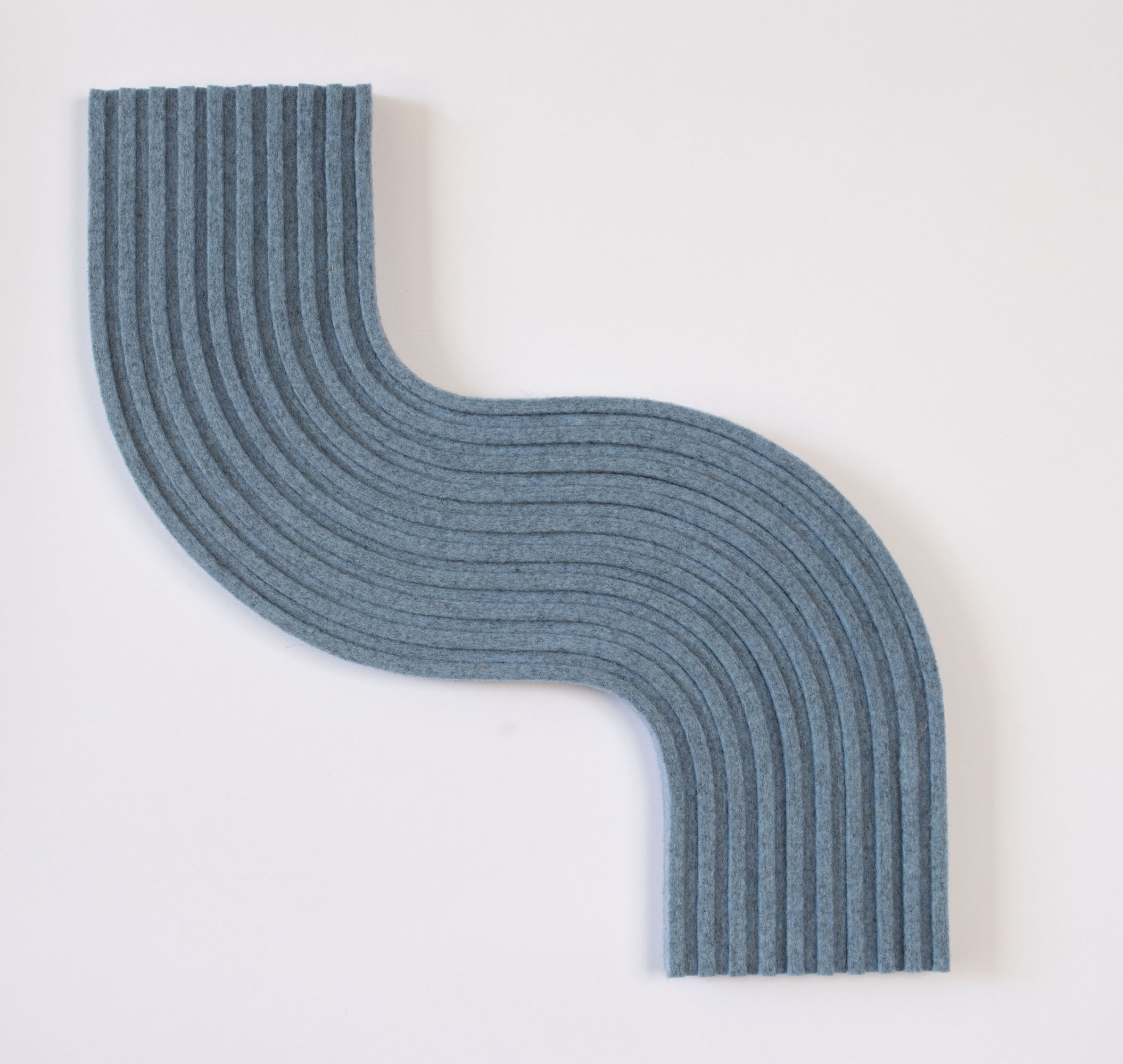
We realized that these curved lines made a perfect framing element for a mirror! Thus our Wander Mirror Collection was born. Long strips of felt are laid on edge in alternating heights and wrapped around the mirror insert. The clean lines and modern feel of the mirror’s soft shapes invite you to picture yourself surrounded by their stylish geometry. Mirrors are a home decor accessory that Submaterial is truly excited about exploring further. We love the combination of beautiful and functional decor.
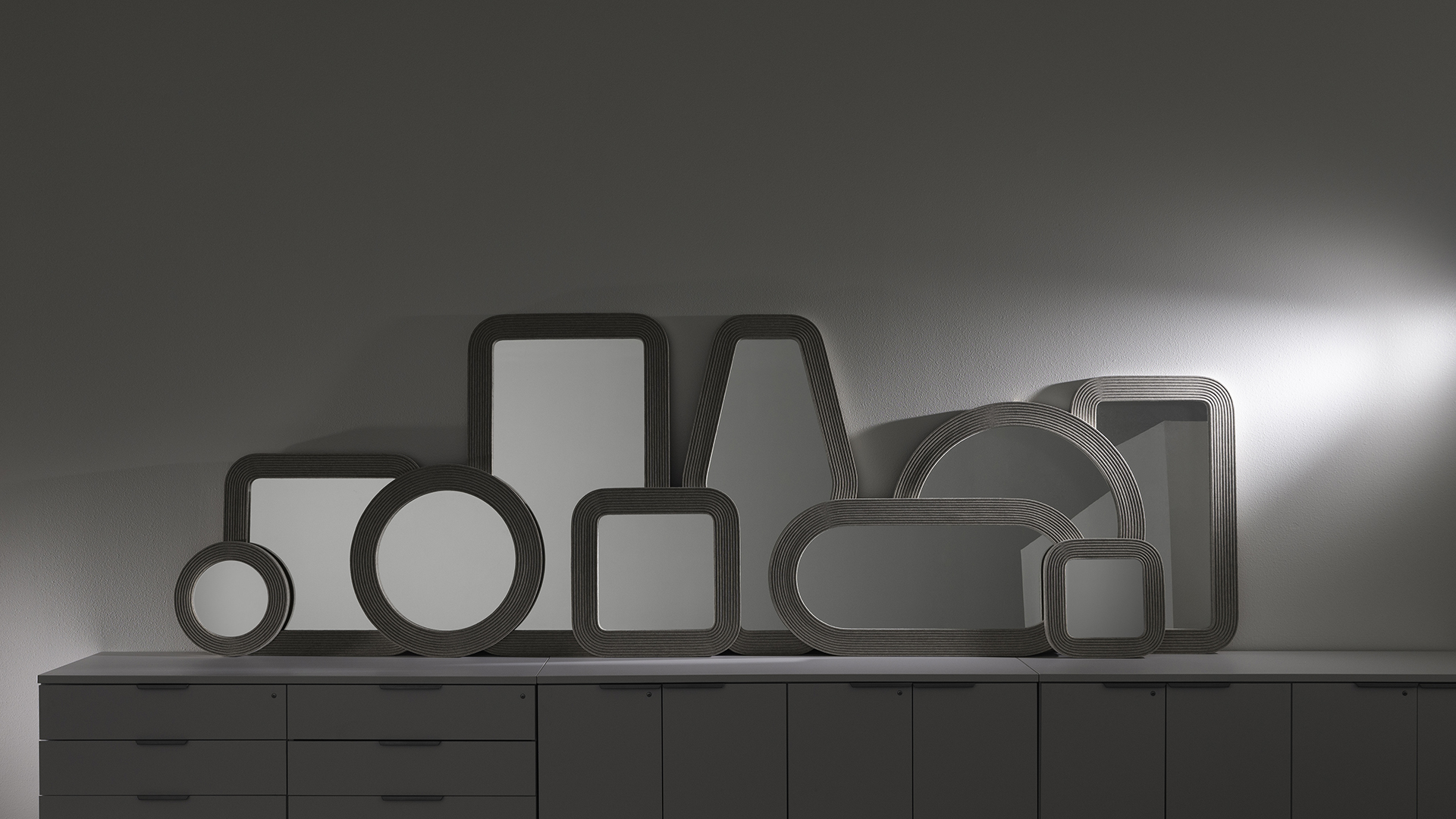
Pods
Sculptural objects have always been a design passion of our founder David Hamlin. He looks to nature to be inspired. If fact, he has often said that if he were not a designer, he would have liked a career in geology. It is unsurprising, then, that the sculptural objects he creates mimic the forms of river stones, pinecones, trees, and geological strata. So let’s take a moment to delve into the product provenance of our wool felt Pods.
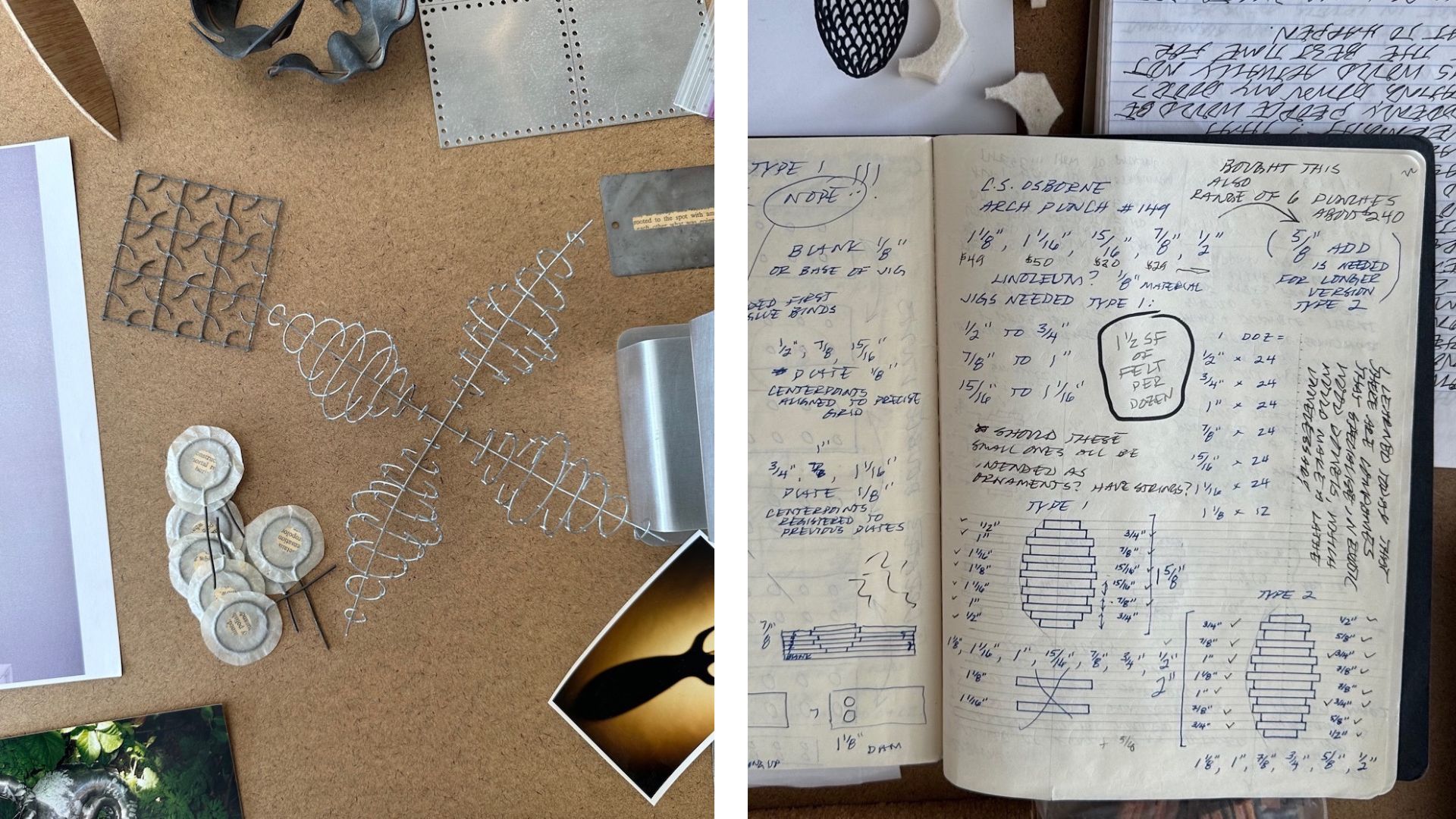
Today Submaterial fabricates most of our designs in wool felt, leather, cork, and wood. In his early days of designing and iterating sculptural objects that would later become design products, David experimented with many other materials, including, most prominently, metal. Above on the left is a design experiment rendered in a thin metal wire. You can see the shape, the dimensionality, the play of bulbous forms, wide in the center and narrow at the ends, and the attention to detail have become Submaterial standards, even in this piece created before Submaterial existed. This design sparked an idea for a piece that separated the four rounded forms and fabricated them in wool felt. See the image above at right for the detailed planning for the pods.
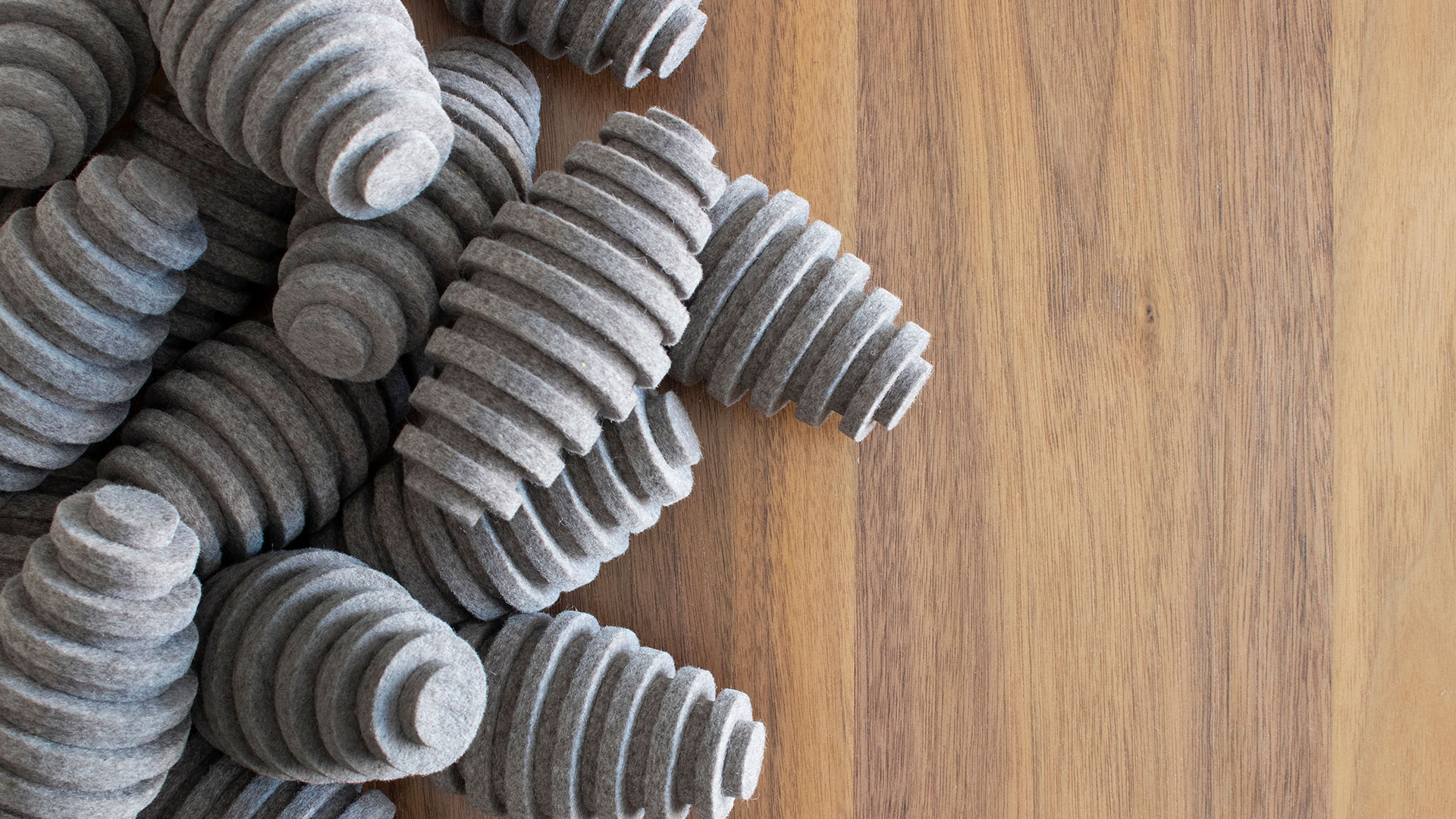
Today, the Submaterial Pods Sets (six pods) are created from dense 100% Merino wool and can be fabricated in more than 90 FilzFelt colors. They are decorative objects that add warmth and visual interest to any commercial or residential space.
Our designers are working on plans for new functional and decorative objects this year. We are especially interested in using our remnant materials (felt, cork, leather), which are left over when making our larger design product. We continually work towards being as cost-effective and labor-effective with our sustainable materials as possible so that we can create the least amount of waste.